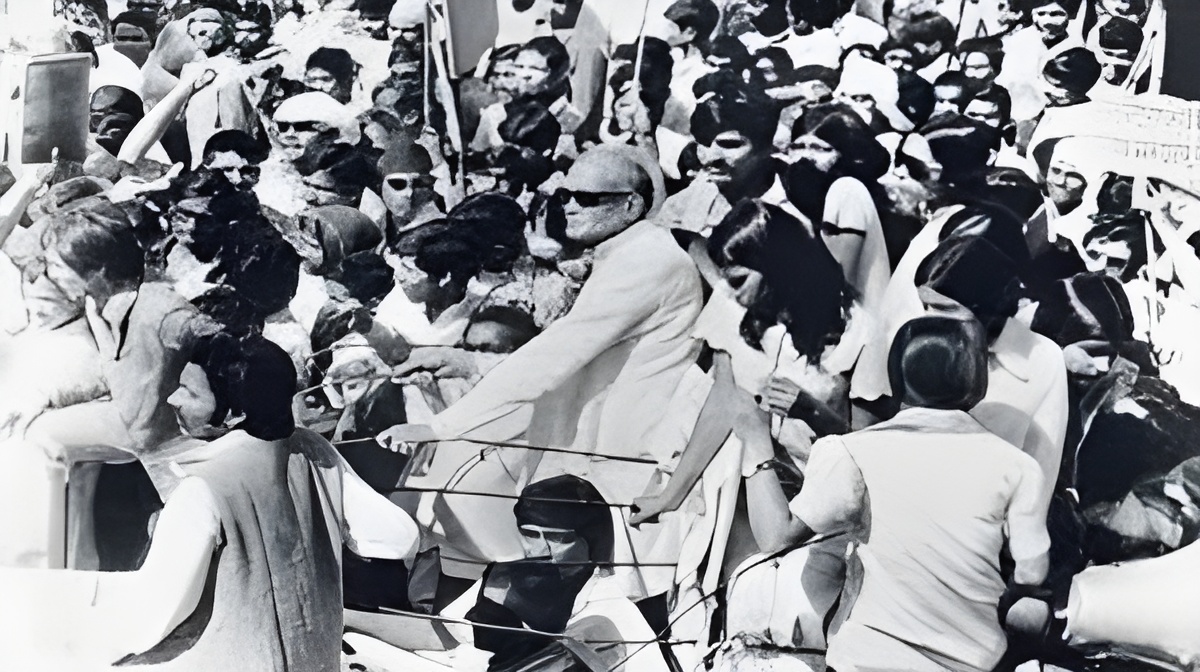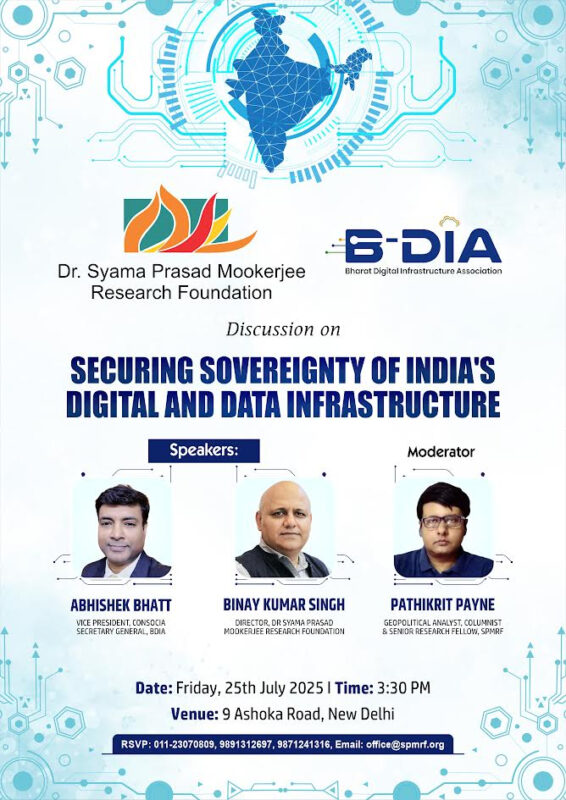The judiciary has grown stronger since then, but the lessons of those 21 months should never be forgotten.
Whenever we talk about the Emergency in India (1975–1977), we often recall the arrests of political leaders, censorship, and a sweeping suspension of civil liberties. But there was another battlefield where democracy was silently tested — our judiciary. As the guardian of the Constitution, the courts were expected to be the last line of defence against authoritarian overreach during that dark period; however, the judiciary faltered. It was a test of independence — and for the most part, it failed.
Long before the Emergency was declared, signs of a brewing conflict between the judiciary and the Indira Gandhi-led executive were evident. The central tension revolved around the balance of power — specifically, whether the judiciary could limit Parliament’s authority. A turning point came with the Kesavananda Bharati v. State of Kerala (1973) case. The Supreme Court ruled, in a narrow 7–6 majority, that while Parliament could amend the Constitution under Article 368, it could not alter its “basic structure” — which included the rule of law, democracy, separation of powers, and fundamental rights. This judgment limited Parliament’s authority and directly challenged the dominance of the executive.
In retaliation, the government altered the process of judicial appointments. The supersession of senior judges in 1973 — when Justice A.N. Ray was appointed Chief Justice of India over three more senior judges — was seen as an attempt to pack the judiciary with judges considered “committed” to the government’s ideology. The confrontation escalated when Indira Gandhi’s 1971 Lok Sabha election from Rae Bareli was invalidated by the Allahabad High Court on June 12, 1975. Justice Jagmohan Lal Sinha found her guilty of electoral malpractice under the Representation of the People Act. Ordered to vacate her seat and barred from contesting elections for six years, Gandhi faced a severe personal and political crisis. Just 13 days later, on June 25, 1975, the Emergency was declared under Article 352 of the Constitution, citing “internal disturbance.” Civil liberties were suspended, the press was censored, and opposition leaders were jailed. The judiciary — already under pressure — was pushed into a corner.
The most infamous case of this period, and perhaps in Indian constitutional history, is ADM Jabalpur v. Shivkant Shukla (1976), commonly called the Habeas Corpus Case. The question before the Court was simple yet foundational: Could the right to life and liberty be suspended during an Emergency? And could a person who was detained unlawfully seek redress in court? The majority of the Supreme Court — Chief Justice A.N. Ray and Justices M.H. Beg, Y.V. Chandrachud, and P.N. Bhagwati — ruled 4–1 that during a national Emergency, even the right to seek habeas corpus under Article 226 was suspended. The government could detain anyone without any legitimate reason, and courts had no authority to intervene.
Only Justice Hans Raj Khanna dissented. In one of the most courageous judgments in Indian judicial history, he wrote: “Even in the absence of Article 21, the state has no power to deprive a person of his life or liberty without the authority of law.” He argued that the right to life was inherent and inalienable, predating the Constitution itself. His principled stand cost him the Chief Justiceship. In 1977, Justice M.H. Beg — junior to Khanna — was appointed CJI, leading to Khanna’s resignation. Today, Justice Khanna’s dissent is revered as a moral beacon, a voice of conscience in a time of constitutional darkness.
A Judiciary Under Pressure: Submission and Silence
During the Emergency, Article 359 was used to suspend the enforcement of fundamental rights, particularly Articles 14, 19, 21, and 22. Thousands of political opponents and ordinary citizens were detained under draconian laws like the Maintenance of Internal Security Act (MISA), often without any formal charges. The judiciary, especially the higher courts, largely chose not to challenge the executive. While some High Courts initially upheld citizens’ rights (as in the cases that prompted the ADM Jabalpur appeal), the Supreme Court ultimately sided with the mighty state. Many legal scholars, including H.M. Seervai and Granville Austin, have termed this period the “constitutional breakdown” and the “darkest hour” of the Indian judiciary. Judicial independence — the cornerstone of democracy — was deeply compromised.
Justice Khanna’s legacy became larger than the court he sat in. He knew his dissent would cost him dearly — and it did. But his courage was later recognised by both the Bar and the Bench. He was posthumously honoured with the Padma Vibhushan in 1999. The Supreme Court itself, in later years, acknowledged that the ADM Jabalpur verdict was wrongly decided, most notably in Justice D.Y. Chandrachud’s opinion in the Puttaswamy (Right to Privacy) case in 2017, where he wrote: “The judgments rendered by all the four judges constituting the majority in ADM Jabalpur are seriously flawed. Life and personal liberty are inalienable rights. Neither the Constitution nor the State can extinguish them.”
When the Emergency ended in March 1977 and the Janata Party came to power, a wave of judicial introspection followed. This self-correction led to the birth of Public Interest Litigation (PIL), which made justice more accessible to the poor, marginalised, and voiceless. Judges like Justice V.R. Krishna Iyer and Justice P.N. Bhagwati ushered in a new era of judicial activism. Ironically, Justice Bhagwati, who was part of the majority in ADM Jabalpur, later publicly expressed regret, calling the judgment a mistake and the “lowest point” of his career.
Constitutional Safeguards and the 44th Amendment (1978)
Perhaps the most significant legal response to the Emergency was the 44th Constitutional Amendment Act, passed in 1978. It aimed to undo many of the constitutional distortions brought in during the Emergency through the 42nd Amendment. Key features included:
- Article 21 (Right to Life and Personal Liberty) could not be suspended, even during an Emergency.
- Safeguards were added to prevent misuse of Emergency provisions.
- Article 359 was amended to limit the suspension of rights.
- The term “internal disturbance” in Article 352 was replaced with “armed rebellion” to prevent vague justifications for an Emergency.
These changes were critical in strengthening democratic resilience.
Lessons from a Judicial Crisis
The Emergency remains a case study in constitutional failure — but also in redemption. It reminds us that judicial independence is fragile and must be vigilantly protected. Dissent matters, and sometimes, one lone voice (like Justice Khanna’s) can carry the weight of the Constitution. Institutions are only as strong as the integrity of those who inhabit them. Law schools, historians, and civil society continually revisit the Emergency not just to recount the past, but to remain vigilant in the present. The judiciary has grown stronger since then, but the lessons of those 21 months should never be forgotten. The Emergency tested every institution of Indian democracy, but none was tested as profoundly as the judiciary.
(The views expressed are the author's own and do not necessarily reflect the position of the organisation)


